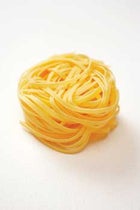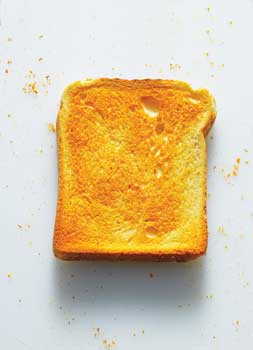IT WASN’T A FREAK STORM or pulmonary edema that nearly derailed Dave Hahn’s attempt to top out on Mount Everest for the second time, in 1999. It was a piece of bread. For two years, the mountaineering legend had battled a host of maladies—upset stomach, diarrhea, and a lingering weakness—but he never suspected the foods he was eating to fuel himself (pasta, cereal, bread) were the root of his problem. Hahn, it turned out, had developed celiac disease, an autoimmune response to gluten, a protein found in wheat, barley, and rye. “It was hell,” says Hahn, recalling the trip. “I was supposed to be the old hand, but because of me we got back down late, after it was already dark.”
Food for Thought
Check out Gluten-free tips from Xterra USA Championship series athlete Jennifer Smith, who gave up gluten in 2007 and experienced a breakout season in 2008, finishing third in series points.Pasta
 Gluten sensitivity can have a corrosive impact on athletes trying to stay at the top of their game.
Gluten sensitivity can have a corrosive impact on athletes trying to stay at the top of their game.Now 49, gluten-free, and trying for his 13th Everest summit, Hahn has never felt better. “I could not have continued climbing had I not been diagnosed,” he says.
Since Hahn’s near disaster at 29,000 feet, celiac disease has reached almost epidemic proportions, afflicting 1 in 133 Americans and creating a $2.6 billion market in gluten-free foods. Now, growing
evidence suggests that it’s not just athletes with celiac who may benefit from giving up their pre-race pasta feed. A study published in March by the University of Maryland’s Center for Celiac Research
suggests that approximately 20 million people who don’t test positive for celiac or its less potent cousin, wheat allergy (which affects roughly 500,000 people), suffer from gluten sensitivity. Symptoms can range from fatigue to depression to joint and abdominal pain.
Like celiac, gluten sensitivity prompts the immune system to inflame cells throughout
the body. And though the symptoms usually aren’t as severe as with celiac, which causes toxic particles to leak into the body, gluten sensitivity can have a corrosive
impact on athletes trying to stay at the top of their game.
Just ask professional mountain biker Brian Lopes. Though he has never been tested for celiac, Lopes gave up gluten eight months ago and is riding 5 to 10 percent faster. “I stopped eating gluten because my friend said it would make me fart less,” says Lopes, who’s won four world championships. “Now I don’t fart and I’m faster.”
According to Alessio Fasano, M.D., lead author of the Maryland study, Lopes’s bowel distress is a common side effect of gluten intolerance. “And if you do have a sensitivity to gluten,” says Fasano, “exercise may make the problem even worse.”
That’s old news to Robby Ketchell, the director of sports science for the Garmin-Cervélo pro cycling team. Since 2008, riders have experienced improved post-ride recoveries, which Ketchell attributes to the team’s gluten-free diet. “When our guys ride, they’re tearing muscle fibers, and that creates inflammation in their bodies,” says Ketchell. “We need to get rid of that inflammation so they can ride strong the next day. The last thing we want is something that causes more inflammation.”
Scientists aren’t exactly sure why there’s been an increase in gluten intolerance in recent years, but they believe it may have something to do with the proliferation of bread, pasta, and other gluten-laden foods in the American diet. “Gluten is increasingly found in the things we eat,” says Fasano. “It may be that our bodies just aren’t equipped to handle that much of it.”
Currently, there is no test for gluten sensitivity. But Shelley Case, a Canadian dietitian and author of The Gluten-Free Diet, offers this advice to help you determine whether you’re better off without it: Run a mile and time yourself, then go on a gluten-free diet for four weeks. Keep notes on how you’re feeling. Then do another one-mile test. “If you’re feeling better during your training and you perform better, you may very well have gluten sensitivity,” says Case.
The next step is finding enough carbohydrates to substitute in your new diet. A moderately active person requires about four grams of carbohydrates for every 2.2 pounds of body weight per day. For a 150-pound guy, that’s about seven large potatoes. Nancy Clark, a Boston-based sports dietitian and author of nine books on sports nutrition, recommends eating things like bananas, lentils, corn, and quinoa instead of muffins, bread, and pasta. “You can’t just stop for pizza after a race,” she says. “You need to be careful about what you eat.” Really careful. Gluten is found in everything from deli meats—it’s often used as filler—to sauces and salad dressings.
Fasano doesn’t recommend everyone go gluten free—after all, wheat is an effective fuel for athletes who can tolerate it. But since the Garmin-Cervélo team gave it up, Ketchell says that no rider has told him the diet isn’t worthwhile. “Part of that,” he says, “is that eating gluten-free foods forces you to avoid processed foods, and that just makes you healthier.”


